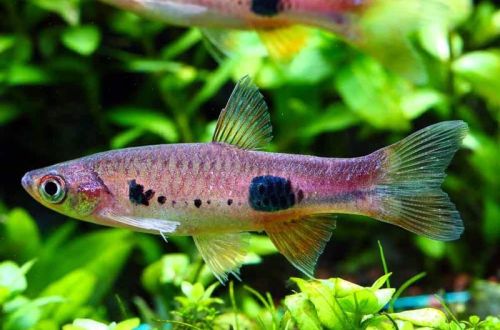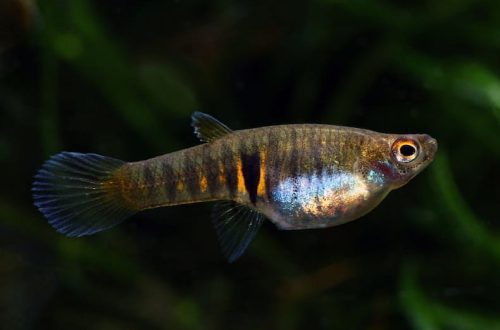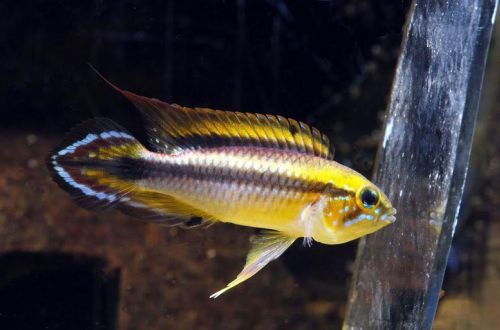
rasbora the clown
Rasbora clownfish, scientific name Rasbora kalochroma, belongs to the family Cyprinidae (Cyprinidae). It will make a good addition to the freshwater aquarium community due to its peaceful disposition and relatively simple maintenance.

Contents
Habitat
It comes from Southeast Asia from the territory of Peninsular Malaysia, from the islands of Sumatra and Kalimantan. Inhabits peat bogs located in the depths of tropical forests, and associated streams and rivers.
A typical biotope is a shallow reservoir, the bottom of which is covered with a layer of fallen plant material (branches, leaves). As a result of the decomposition of organic matter, the water acquires a rich brown color. Hydrochemical indicators have very low pH and dGH values.
Brief information:
- The volume of the aquarium – from 100 liters.
- Temperature – 23-28°C
- Value pH — 5.0–7.5
- Water hardness – soft (1-10 dGH)
- Substrate type – soft dark
- Lighting – subdued
- Brackish water – no
- Water movement is weak
- The size of the fish is about 10 cm.
- Food – any food
- Temperament – peaceful
- Keeping in a flock of 8-10 individuals
Description
Adult individuals reach a length of about 10 cm. Red and orange colors predominate in color, the abdomen is light. The body pattern consists of two large dark spots, just like in the Elegant rasbora. Young fish, in turn, outwardly resemble Dwarf Rasbora. Such similarity often leads to confusion when one species is supplied under a different name.
Sexual dimorphism is weakly expressed. Females differ from males in a slightly larger body.
Food
An omnivorous species, it will accept most popular foods designed for aquarium fish. The daily diet may consist of dry, frozen and live foods of a suitable size.
Maintenance and care, arrangement of the aquarium
The optimal size of an aquarium for a flock of 8-10 fish starts from 100 liters. In the design, it is desirable to recreate a habitat resembling a natural reservoir. A good choice would be sandy soil, a few snags and shade-loving plants planted in dense clusters. The lighting is subdued. Floating vegetation can serve as an additional means of shading.
A useful design element will be the leaves of trees such as oak, birch, maple or more exotic – Indian almond. As the leaves decompose, they release tannins that color the water in a characteristic brown color.
It is worth noting that when keeping Rasbora the clown, the choice of design will not be as important as the quality of the water. It is important to ensure low values of hydrochemical parameters and prevent their fluctuations. Regular maintenance and placement of a productive filtration system will keep the water quality at an acceptable level.
Behavior and Compatibility
They are distinguished by a peaceful friendly disposition, compatible with a large number of species of comparable size. They prefer to be in large flocks. The minimum group size is 8-10 individuals. With a smaller number, they become shy.
Breeding / breeding
Like most cyprinids, the Rasbora clown is characterized by high fecundity and lack of parental care for offspring. In a favorable environment, with numerous shelters in the form of thickets of plants, the fish will spawn regularly and some of the offspring can survive even in a common aquarium.
Fish diseases
Hardy and unpretentious fish. If kept in suitable conditions, then health problems do not arise. Diseases occur in case of injury, contact with already sick fish or significant deterioration of the habitat (dirty aquarium, poor food, etc.). Read more about symptoms and treatments in the Aquarium Fish Diseases section.





